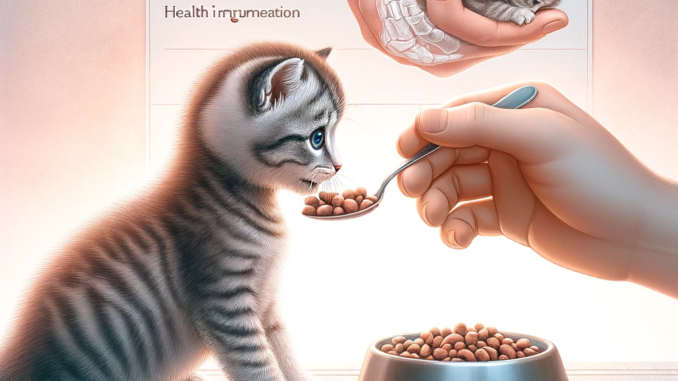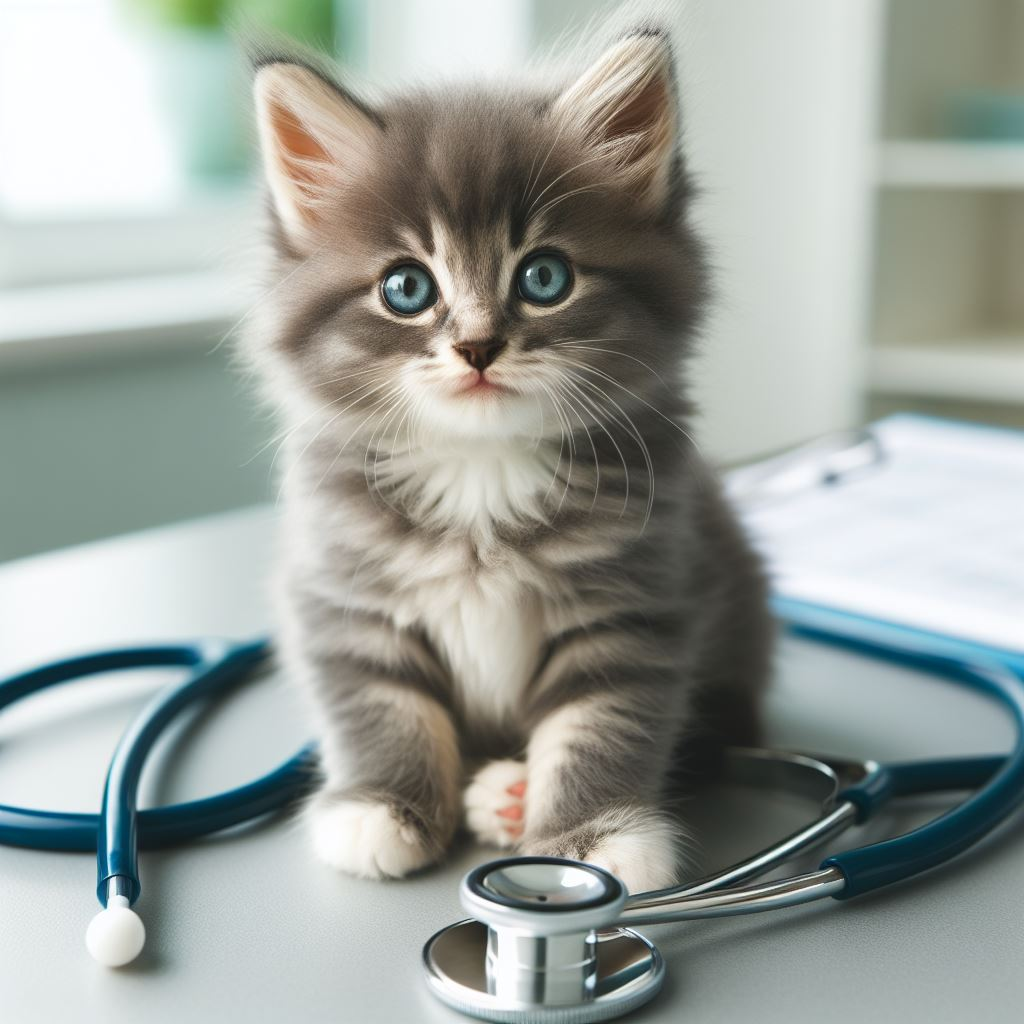
Helping Your Kitten Transition to Big Kid Food
Watching those tiny furballs grow up so fast can be bittersweet. One day, they’re nursing, and the next they’re nibbling on chow. Making the switch from mama’s milk to solid food is a huge step for kittens and their humans. I remember when my tabby Peaches started teething at around 4 weeks – she got so curious about my breakfast! That’s when I knew it was time to start supplementing the natural goodness of mama cat’s milk with some high-quality grub. This comprehensive guide will walk you through everything you need to know to make mealtimes a delight.
When Should Kittens Start Chowing Down?

Generally, most kittens are ready to start sampling solid foods at around 4 weeks old. However, each ball of fluff develops at their own pace. Signs to look for include more curiosity about their surroundings, nibbling on random objects (watch those wires!), and of course, the arrival of their sharp little milk teeth. My vet encouraged me to follow Peaches’ lead and let her taste-test as interest arises while continuing mama’s milk until at least 8 weeks.
3 Signs Your Kitten is Ready for Solids
- Insatiable Energy: A growth spurt hits, unleashing a Tasmanian devil in your home.
- Biting and Chewing: Those little teeth start making an appearance along with the urge to chomp.
- Interest in People’s Food: They’re watching (and maybe trying to steal) whatever you’re eating.
Introducing Solid Foods: Tips for a Smooth Transition
When Peaches started stealing my scrambled eggs, I knew it was go time to introduce solid kitten food. Making the switch requires patience – kittens are still learning how to use their mouths and may struggle with certain textures. Here are my top tips after trial and tribulation for making mealtimes mess-free and stress-free:
- Kitten Kibble is Key: Look for a reputable brand formulated specifically for kittens, which has the right nutrients for growth and development.
- Get Creative with Textures: Mix in formula, broth, or water to soften dry food at first or offer wet pouches.
- Take Baby Steps: Start with a tablespoon or two at a time, working up to bigger portions as kittens get accustomed to new flavors and textures.
It may take time and patience for your kitten to get the hang of this whole chewing and swallowing thing. Offer praise and pets for their efforts – it’s a big, wide world of food they’re exploring!
3 Common Mistakes Humans Make
While the temptation to share your chicken parm is real, there are some rookie moves to avoid when getting your kitten on the good stuff:
- Skipping kitten-specific foods formulated for their growth needs.
- Introducing new foods too quickly before they master chewing and digesting.
- Not paying attention to signs of tummy troubles or allergies.
Serving Up Refreshments: When Do Kittens Start Drinking Water?
Just as their baby teeth arrive, most kittens become curious about lapping up the water around 4-6 weeks old. I set out a shallow bowl of fresh water daily, making sure it’s easily accessible and well away from the litter box. Hydration is crucial, so pay attention that your kitten is getting enough fluids, especially as they transition to more solid food.
Keeping Kittens Well Hydrated
- Water Stations: Set up a few bowls around your home so there’s always one nearby.
- Add Some Flair: Many kittens love bubbling fountain bowls.
- Daily Refills: Refresh water every day and scrub bowls to keep things clean.
Special Diets: Allergies, Intolerances and Preferences
Every kitten is one-of-a-kind when it comes to dietary needs. My friend’s Ragdoll Luna couldn’t tolerate dairy, while my Peaches turned up her nose at poultry flavors. Here are some considerations:
- Allergy Alert: Note symptoms like upset tummies, rashes, or vomiting, and talk to your vet about possible food allergies.
- Lactose-Free: If lactose intolerant, feed kitten formula labeled lactose-free.
- Picky Palates: Offer an array of flavors/textures to discover kitty preferences!
Hydration Helps Health
From milk to water, staying hydrated is vital for kittens, who are prone to dehydration when transitioning to more solid food. Some tips:
- Water Fountains: Entice kittens to drink more from bubbling, flowing water sources.
- Location, location: Set up a few watering holes around your home for easy-access.
Feeding Behavior Signals Health Signals
I keep a close eye on how Peaches behaves around mealtimes, watching for cues about her health and happiness. Here’s what to pay attention to:
- Appetite Changes: Skipping meals or gulping food could indicate issues like mouth pain or illness.
- Mealtime Mischief: Aggression around other pets or food bowls may signal discomfort or stress.
Preventing Feedtime Stress
A calm environment prevents kittens from feeling anxious during meals. I give Peaches solo dining:
- Provide separate, quiet feeding stations if you have multi-cat households.
- Ensure food and water are distanced from high-traffic areas or noise.
The Takeaway on Feeding Those Growing Kittens
The transition from nursing to nibbling solid foods is an exciting milestone but also requires some attentive caregiving. Offering the right nutrition, staying on top of hydration, understanding behavioral signals, and minimizing stress sets the foundation for health. Most of all, shower them with patience and love as you both navigate new food frontiers! With time, those tiny kittens will be chowing down with gusto and giving thanks with happy purrs.


Leave a Reply